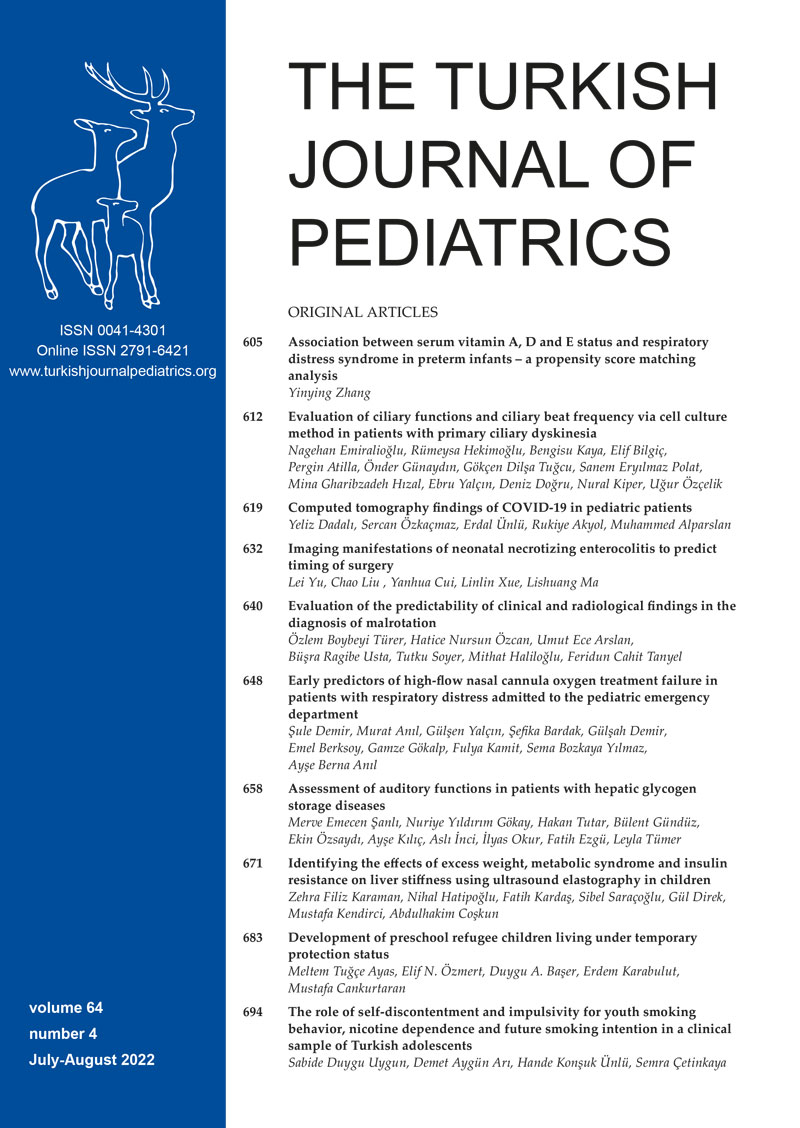Abstract
Background. To find the predictor of optimal surgical timing for neonatal necrotizing enterocolitis (NEC) patients by analyzing the risk factors of conservative treatment and surgical therapy.
Methods. Data were collected from 184 NEC patients (Surgery, n=41; conservative treatment, n=143) between the years 2015 and 2019. Data were analyzed by univariate analysis, and multivariate binary logistic regression analysis.
Results. Univariate analysis showed that statistically significant differences between the surgery and conservative treatment groups. The results of multivariate Logistic regression analysis indicated intestinal wall thickening by B-ultrasound and gestational age were independent factors to predict early surgical indications of NEC (p < 0.05). The true positive rate, false positive rate, true negative rate and false negative rate in the diagnosis of necrotic bowel perforation guided by DAAS (Duke abdominal X-ray score) ≥7 and MD7 (seven clinical metrics of metabolic derangement) ≥3 were 12.8%, 0.0%, 100.0% and 87.2%, respectively.
Conclusions. In summary, the ultrasound examination in NEC children showing thickening intestinal wall and poor intestinal peristalsis indicated for early operation.
Keywords: abdominal X-ray, abdominal ultrasound, necrotizing enterocolitis, operation timing
Copyright and license
Copyright © 2022 The Author(s). This is an open access article distributed under the Creative Commons Attribution License (CC BY), which permits unrestricted use, distribution, and reproduction in any medium or format, provided the original work is properly cited.














